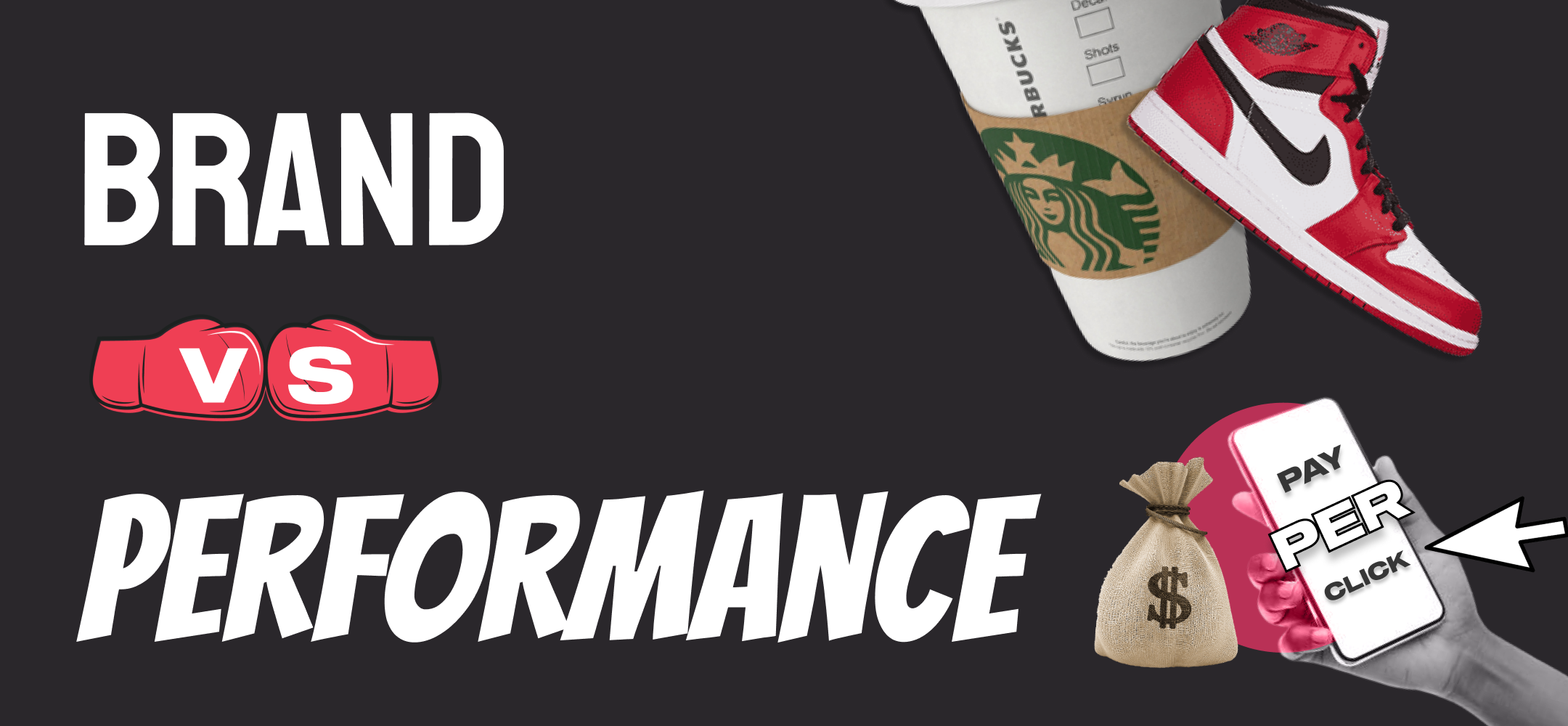Invest in branding or performance marketing when you're a smaller company?
In today's increasingly competitive marketplace and increasingly demanding customers, it's crucial for small businesses to choose the right marketing strategy. The two main directions businesses can consider are brand and performance marketing. Both approaches have their advantages and are effective in different situations. In this article, we will look at each of these approaches and discuss how they can help small businesses achieve their goals.
Brand Marketing
Brand marketing focuses on building and strengthening brand identity. The goal is to create long-term customer loyalty by focusing on the company's values, vision and mission. This approach focuses not just on selling a specific product or service, but on the overall impression a brand leaves.

Benefits of Brand Marketing
- Credibility and customer loyalty.
- Greater competitive advantage.
- Long-term results: Investing in brand marketing can have long-term and stable effects on customers.
- Opportunity to expand: A strong brand makes it easier to expand the range of products or services.
Disadvantages
- A more complicated type of marketing to measure. (Yet it can be done without a large expenditure. But we'll save that for another upcoming article.)
- Results take time, not immediately - don't expect to be famous with your brand in a month.
- You need to dig in and set everything up well at the start, which can be unintuitive and tedious for some.
Performance Marketing
Performance marketing is the opposite of brand marketing. Here the focus is on achieving specific goals through measurable and immediate results. This type of marketing often focuses on specific actions such as purchases, clicks, subscriptions, or app downloads.
Benefits of Performance Marketing
- Measurability.
- Flexibility and optimization.
- Rapid Response: Results are visible immediately, allowing for quick responses to changes and campaign optimization.
- Targeting specific audiences.
Disadvantages
- Constantly increasing cost per click.
- Rising competition in search engines
- Cookies and data collection keep getting cut-off numbers from the campaign's measurements.
- When you turn off performance campaigns, sales decline will be dominant
Which approach to take?
The right choice between brand marketing and performance marketing depends on your goals, budget, and the nature of your business. The ideal strategy may be a combination of the two approaches that take into account long-term brand identity building while maximizing immediate results.
Some tips on how to combine the two approaches:
- Brand marketing as a foundation: Start with building a strong brand and brand awareness. Investing in brand marketing will serve as the foundation for long-term growth.
- Performance marketing for fast results: Use performance marketing tools to get immediate results and growth. This can help fund long-term investments in brand marketing.
- Data tracking: Analyze data from both approaches and explore which strategies work best. Optimize your campaigns based on these insights.
- Reach the right target audience: Take advantage of performance marketing to accurately reach your target audience and then build them as loyal customers through brand marketing.
A tip from WeBetter that works:
The ideal budget allocation for a start-up or small business is to allocate 80 % of the budget to performance marketing so you immediately have money from sales to invest in product or service development and 20 % in the aforementioned branding.
Put a little bit of each profit aside and invest more in the brand step by step. Gradually, this distribution can even out until your business can stand on branding alone.
Conclusion
There is no clear right or wrong answer to whether to invest in brand marketing or performance marketing. Both approaches have their place and can be combined for maximum effect. It is important to carefully consider the company's goals, budget, target audience and long-term strategy before making a decision. But if you're starting out, be sure not to rely on the brand alone.
With a well-thought-out combination of these two approaches, small businesses can achieve long-term success in a competitive marketplace.




